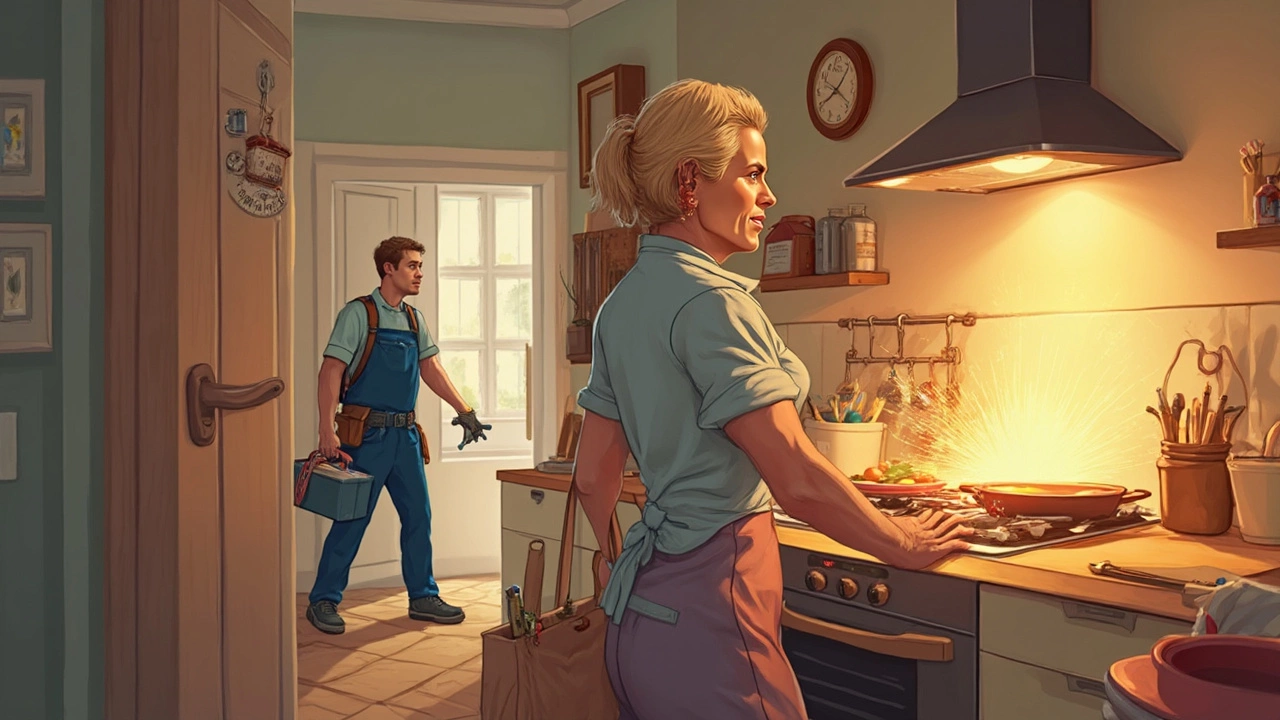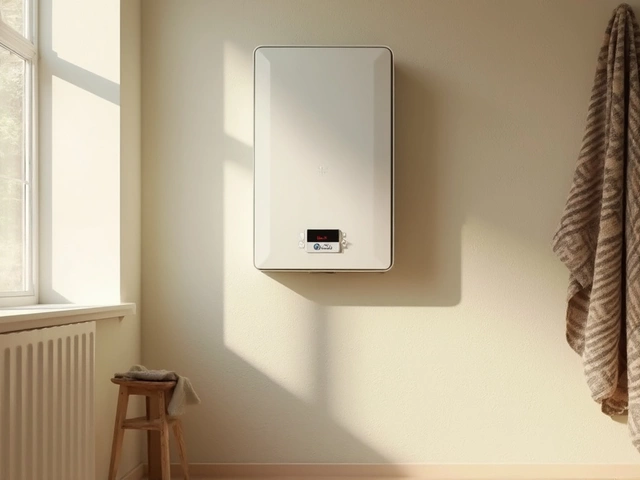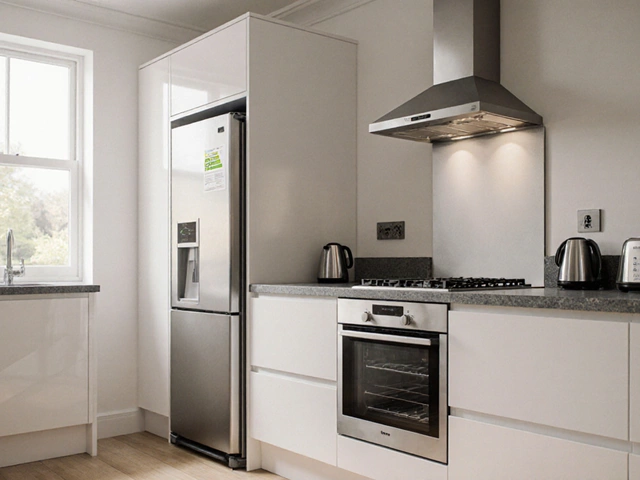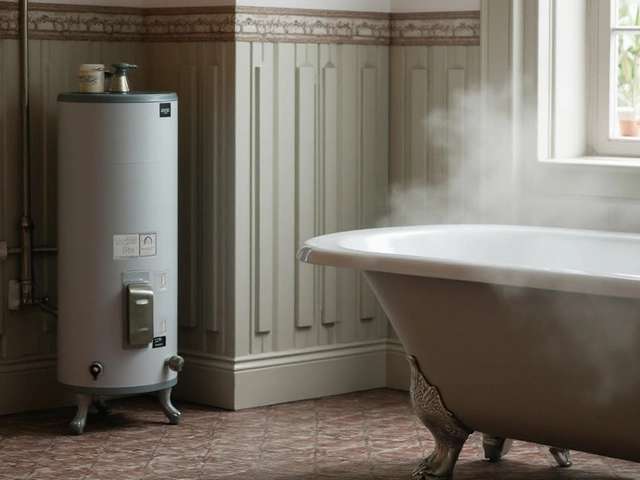If your cooker won’t heat, your extractor fan is noisy, or the hob burners keep flickering, you don’t have to panic. Most kitchen appliances give clear signs of what’s wrong, and a few basic tools can solve the problem without a pricey call‑out. Below you’ll find the most common issues and step‑by‑step fixes that work for UK homes.
When an electric oven stays cold, the first thing to check is the heating element. Look inside the oven cavity – a broken or burnt‑out element will show visible cracks or a dark spot. Turn off the power at the consumer unit, remove the element screws, and test it with a multimeter. If the reading is infinite, replace the element (see our guide on Electric Oven Element Replacement Cost for price hints). If the element is fine, the thermostat or wiring could be at fault, and that’s when you should call a qualified technician.
Electric hobs are built with replaceable burners. When a single zone won’t heat, unplug the hob, remove the top plate, and locate the faulty element. Most hobs use a simple snap‑in design – push the old part out and snap the new one in. Re‑assemble, restore power, and you’ll hear that pleasant click of a working coil. Safety tip: always double‑check the power is off before handling live parts.
For a full walkthrough, check out our post “How to Replace a Broken Element on an Electric Hob”. It shows tool lists, common mistakes, and quick test methods to confirm the repair.
Fans that run loudly or stop altogether usually have one of three issues: a clogged filter, a broken motor, or a loose connection. Start by cleaning the filter – a good soak in warm soapy water restores airflow in minutes. If the motor hums but the blades don’t spin, chances are the motor bearings have worn out. Replacing a fan is covered in our guide “How to Replace a Kitchen Extractor Fan Yourself”, which outlines the basic tools, safety steps, and how to secure the new unit.
Don’t try to fix a fan if you notice any burnt smells or sparks; those are signs of electrical faults that need a licensed electrician.
Beyond ovens, hobs, and fans, other kitchen appliances follow similar troubleshooting patterns. A fridge that’s cold but the light stays on often points to a faulty evaporator fan (see our Fridge Not Cooling But Light Is On? article). Dishwashers that won’t start usually have a blocked pump or a loose door latch.
Remember, the key to quick fixes is to turn off power, identify the symptom, and then test the most likely part first. A multimeter, screwdriver set, and a clean work area are all you need for most DIY repairs. If you hit a roadblock, don’t force anything – call a local expert like Bognor Regis Appliance Repair Experts, who can get your kitchen back in shape fast.
With these basics in hand, you’ll spend less time worrying and more time cooking. Keep this guide bookmarked; the next time a kitchen appliance throws a fit, you’ll know exactly what to do.

An electric hob on the fritz can leave you in a lurch, but knowing how much it costs to fix can help you prepare. We'll break down the average repair costs, consider factors like brand, parts, and labor, and help you decide if a repair or replacement makes more sense. Get the inside scoop on typical issues that might arise and how to avoid them in the future. With this guide, you'll feel more confident when talking to repair technicians and won't be caught off guard by unexpected expenses.

Troubles with your water heater might mean it needs a reset. Knowing when and how to reset it can prevent cold showers and unnecessary stress. This guide covers signs your water heater needs resetting, why it's important, and how to do it safely. Plus, learn some handy maintenance tips to keep it running smoothly.

Learn what qualifies as an appliance in UK homes, including major vs. small appliances, what doesn't count, and why the distinction matters for repairs and insurance. Clear, practical guide for homeowners.

If your cooker suddenly stopped working, it might be due to a range of reasons from electrical issues to simple user errors. Understanding the root cause is key to fixing the problem efficiently. In this article, we explore common reasons why cookers fail and offer practical troubleshooting tips to get your appliance working again. From checking the power supply to examining electrical components, we cover it all. Get your cooker back up and running with our straightforward guide.

Electric ovens can sometimes act up and cause frustration in the kitchen. While not every issue requires a professional, understanding the basic components can save time and money. This guide explores the practicality, challenges, and tips for tackling common oven problems. Whether it's a heating issue or a broken door handle, knowing what to check is crucial. Get insights into the DIY approach to electric oven repair to keep your appliance running smoothly.

This article delves into the debate between Rheem and AO Smith water heaters, two titans in the world of home appliances. It provides a comprehensive comparison, exploring key aspects like energy efficiency, durability, and cost-effectiveness. It also highlights some interesting facts and practical tips to help you choose the right water heater for your needs. Whether you're looking to upgrade your system or repair your current unit, this guide aims to provide valuable insights.